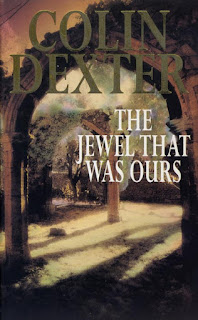LAST DAY OF OUR 25% OFF SALE!
THESE BOOKS WILL BE OFFICIALLY
OUT OF PRINT AS OF TOMORROW!
Having resolved some of the problems I was facing last week I managed to put in a few days on the Valiant index, adding another couple of thousand words to the introduction. Although some of the material is still in note form rather than how it will be in the final book, I'm running to around 23,000 words at the moment. And I've only got as far as 1966.
I'm describing some of the most popular strips' storylines at length – Kelly's Eye, Steel Claw, Wild Wonders, for instance; others will still be covered in detail but not at such length. Trying to achieve a balance between the two isn't going to be easy, so while I'm compiling notes I'm rather overdoing the amount of detail, hence the word count. Hopefully I'll tighten this up as I begin finalising the text.
Rebellion will be publishing The Leopard from Lime Street Volume 1 in July in a regular softcover edition with a limited hardcover from Rebellion Publishing. This is the second book in the Treasury of British Comics line following on from the release of One-Eyed Jack in June.
'The Leopard from Lime Street' is essentially the British Spider-man – a hugely popular home-grown teenage superhero called Billy Farmer, who lives with his Aunt Joan and Uncle Charlie when he is scratched by a radioactive leopard at the local zoo.
Gaining leopard-like strength, speed, reflexes, and tree-climbing abilities, when he’s not fighting crime, Billy sells photographs of himself to the local paper, using the money to support his frail aunt while contending with his violent, greedy and lazy uncle.
With the recent announcement that Titan are reprinting Hook Jaw, it looks like we're enjoying another little wave of reprints for classic British comics (and with 'Leopard' being forty years old, that counts as 'classic' nowadays). The last one began in 2005 with the publication of The Dirty Dozen by Prion, reprinting a dozen issues of Commando, and Titan's reprinting of The Steel Claw: The Invisible Man, the same month. After writing introductions for the latter and the reprint of The Spider which followed shortly after, I became involved in the Carlton/Prion reprints in 2007, writing introductions for a couple of books that were edited in house and then editing a run of War, Battle and Air Ace picture libraries.
Beyond the picture library books, I didn't have any input into the choices made by Carlton about what to reprint. I'd suggested Lion and Boys' World as possibles; they published June & School Friend and Love on Ward B, selecting stories from Hospital Romance Library. The only book I had any control over was The Best of Boyfriend due to the editor assigned to the book suddenly finding himself writing an "instant biography" of Catherine Tate. While he was writing that, I found myself offered the task of planning the Boyfriend reprint, not only selecting the content but how it was to be presented. This meant I could include a complete comic serial and a complete text serial – rather than what was happening in titles like The Best of 2000AD where you would get three episodes of a strip and have it end on a cliffhanger. I even reproduced the format of the comic by having a comic strip begin on the front cover and continue on the front end papers.
There was another strip that ran onto the rear end papers – I didn't want to waste any space! The book was printed on glossy, slightly off-white paper, which meant that the photos of models and pop stars reproduced well. Overall, it was one of my favourites of all the books I did for Carlton and I hoped that it would show the publisher what could be done with their reprint line rather than what was actually being done, with in-house editors throwing together the contents with no great thought to what they were doing as long as it fitted the right number of pages. I was still hoping that they would take a risk on reprinting some of the boys' and humour papers.
The boom quickly fizzled out and the last few books crept out in 2011. There were two problems. The war reprints were designed to be big, thick, cheap volumes. Unfortunately, that didn't fit in with WH Smith's policy of making the most out of every inch of their shelving. So the books were slimmed down from 12 to 10 to 6 issues per book. By the end, the Commando books were reprinting three issues at a price (£4.99) greater than buying three new issues (£1.50 each).
Now that Rebellion have a chance to reprint a ton of material, let's hope they make the books the best they can. But whatever the outcome, after a six-year break, it will be nice to see some of these old strips back in print.
This week's random scans... definitely more random than the last few. Here are a few books that I've picked up over the past few weeks.











































































































